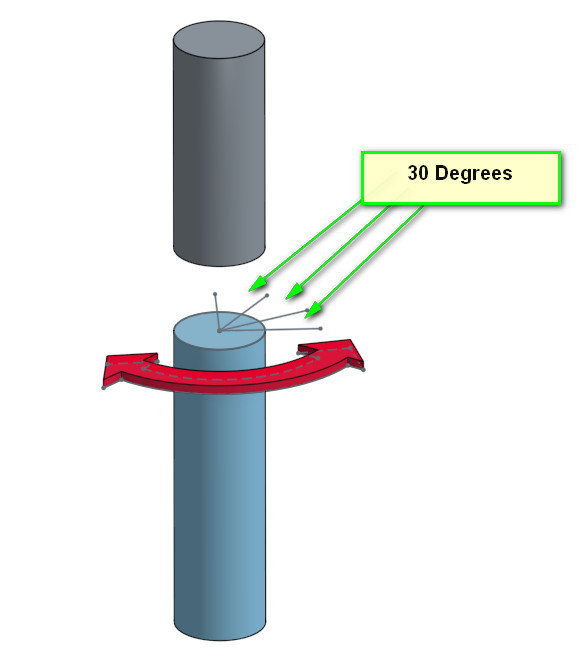ship69
Mechanical
- Nov 23, 2015
- 22
Hello
I have a design challenge for you.
I need to design a joint between 2 round bars of plastic. It is part of a consumer product.
- Diameter of both bars: 10mm
- Material: injection moulded plastic (probably LDPE)
To keep costs down there should be no metal or other materials - just the injection moulded plastic.
Because they have been injection moulded the contours of the parts can be complex.

TWO MODES
The two bars need to snap together with a push fit, and once snapped together, the joint between the two bars should be able to operate in two different modes:
A) 'Stiff-to-Turn Mode'
In this mode, the bars need to be fairly stiff to turn and should also 'snap' to the nearest 30 degree angle.
B) 'Spin Mode'
1. Ideally this mode should be triggered by the a user action - e.g. the user pushing the two bars together. (Conversely the user should be able to return the joint to "Stiff-to-Turn" mode by for example pushing the bars together.)
2. In this mode the bars should be able to spin very easily (and would for example turn very easily by hand) BUT:
3. With the help of gravity they should *tend* to come to rest in one of two preferred directions 180 degrees away from each other.
(e.g. a given point on the lower bar might come to rest pointing either what happens to be north OR the exact opposite direction - south.)
4. In Spin Mode, the also user needs to be able to *change* which direction the 'preferred direction' will be.
How this change in the 'preferred directions' should be achieved is open to debate - possibly the user could move a collar around the higher rod in order to achieve this,
Any suggestions?
J
I have a design challenge for you.
I need to design a joint between 2 round bars of plastic. It is part of a consumer product.
- Diameter of both bars: 10mm
- Material: injection moulded plastic (probably LDPE)
To keep costs down there should be no metal or other materials - just the injection moulded plastic.
Because they have been injection moulded the contours of the parts can be complex.

TWO MODES
The two bars need to snap together with a push fit, and once snapped together, the joint between the two bars should be able to operate in two different modes:
A) 'Stiff-to-Turn Mode'
In this mode, the bars need to be fairly stiff to turn and should also 'snap' to the nearest 30 degree angle.
B) 'Spin Mode'
1. Ideally this mode should be triggered by the a user action - e.g. the user pushing the two bars together. (Conversely the user should be able to return the joint to "Stiff-to-Turn" mode by for example pushing the bars together.)
2. In this mode the bars should be able to spin very easily (and would for example turn very easily by hand) BUT:
3. With the help of gravity they should *tend* to come to rest in one of two preferred directions 180 degrees away from each other.
(e.g. a given point on the lower bar might come to rest pointing either what happens to be north OR the exact opposite direction - south.)
4. In Spin Mode, the also user needs to be able to *change* which direction the 'preferred direction' will be.
How this change in the 'preferred directions' should be achieved is open to debate - possibly the user could move a collar around the higher rod in order to achieve this,
Any suggestions?
J
